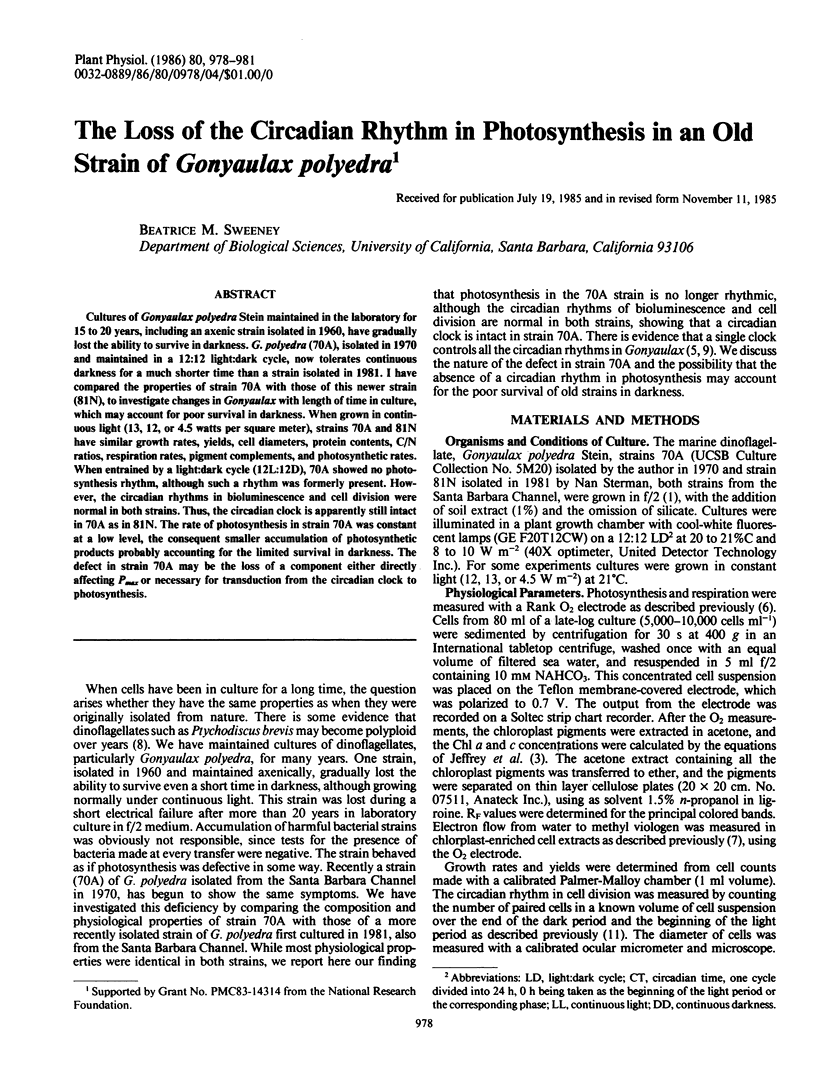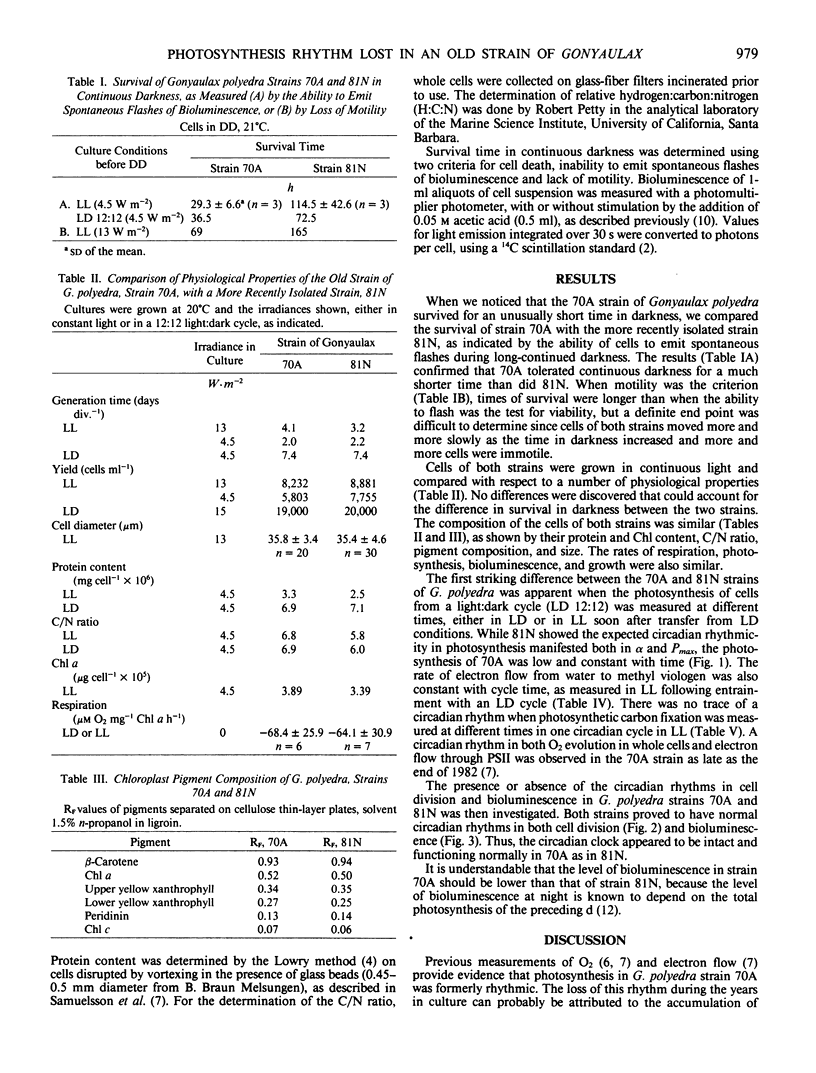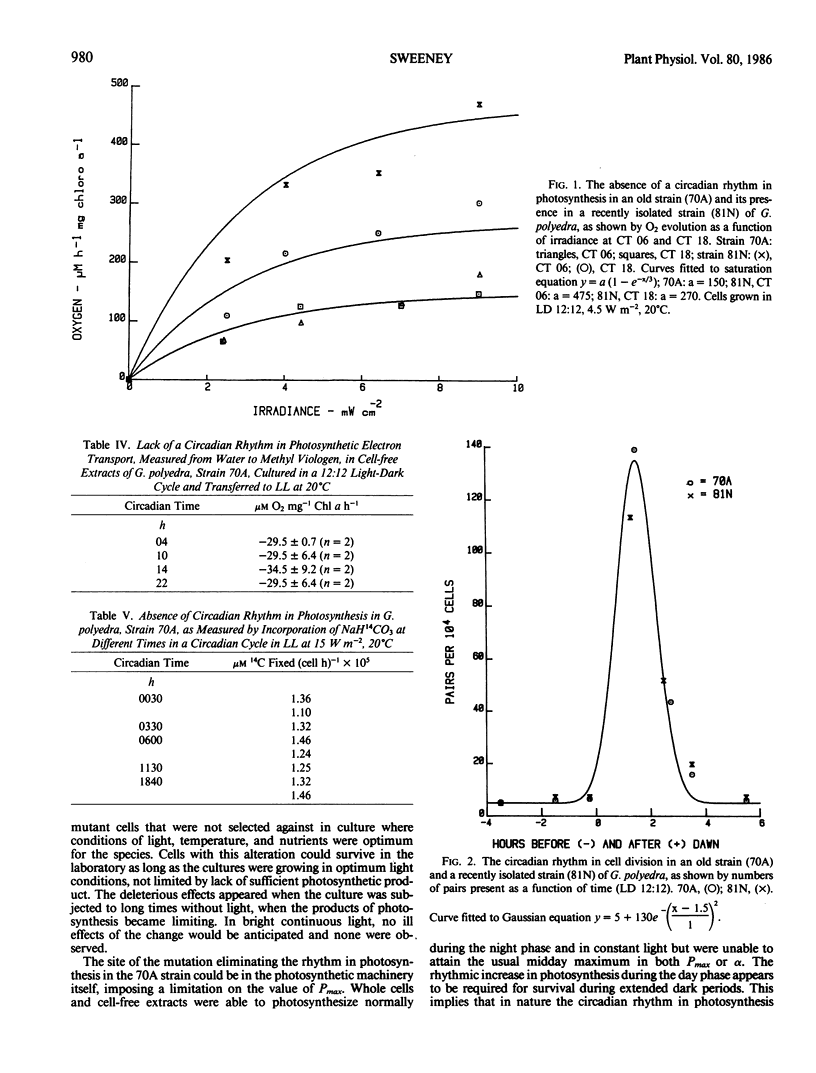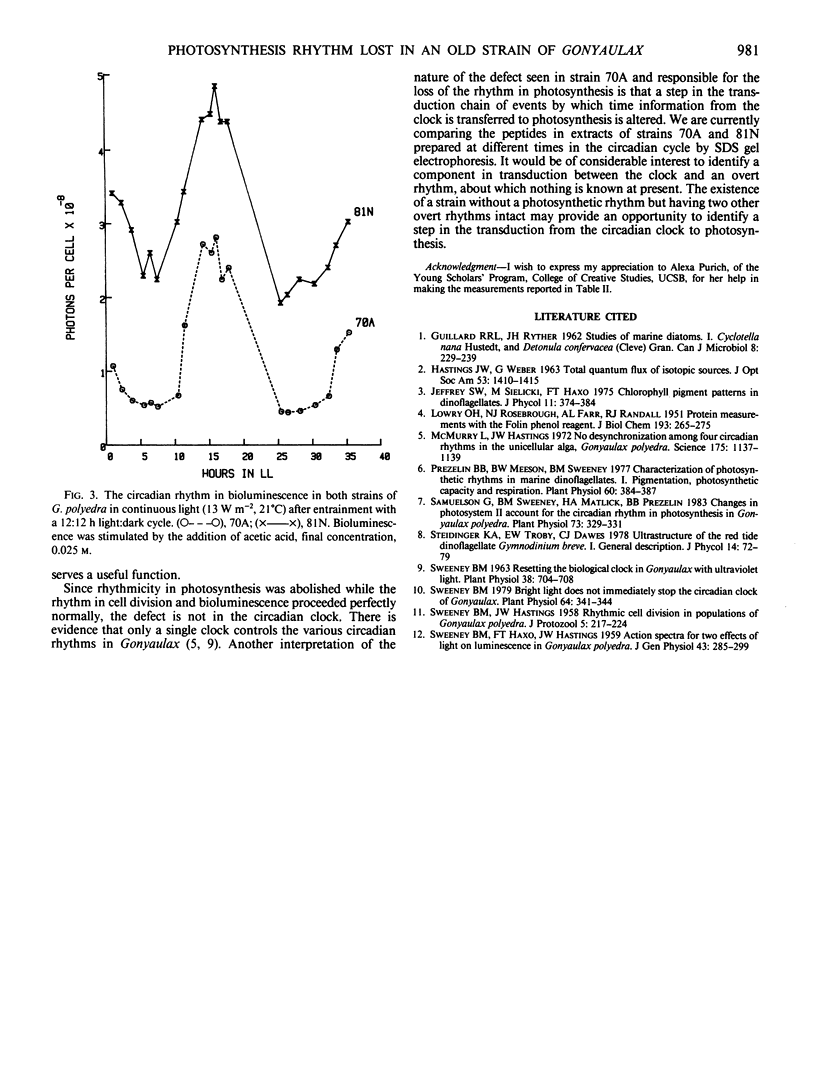Abstract
Cultures of Gonyaulax polyedra Stein maintained in the laboratory for 15 to 20 years, including an axenic strain isolated in 1960, have gradually lost the ability to survive in darkness. G. polyedra (70A), isolated in 1970 and maintained in a 12:12 light:dark cycle, now tolerates continuous darkness for a much shorter time than a strain isolated in 1981. I have compared the properties of strain 70A with those of this newer strain (81N), to investigate changes in Gonyaulax with length of time in culture, which may account for poor survival in darkness. When grown in continuous light (13, 12, or 4.5 watts per square meter), strains 70A and 81N have similar growth rates, yields, cell diameters, protein contents, C/N ratios, respiration rates, pigment complements, and photosynthetic rates. When entrained by a light:dark cycle (12L:12D), 70A showed no photosynthesis rhythm, although such a rhythm was formerly present. However, the circadian rhythms in bioluminescence and cell division were normal in both strains. Thus, the circadian clock is apparently still intact in 70A as in 81N. The rate of photosynthesis in strain 70A was constant at a low level, the consequent smaller accumulation of photosynthetic products probably accounting for the limited survival in darkness. The defect in strain 70A may be the loss of a component either directly affecting Pmax or necessary for transduction from the circadian clock to photosynthesis.
Full text
PDF



Selected References
These references are in PubMed. This may not be the complete list of references from this article.
- GUILLARD R. R., RYTHER J. H. Studies of marine planktonic diatoms. I. Cyclotella nana Hustedt, and Detonula confervacea (cleve) Gran. Can J Microbiol. 1962 Apr;8:229–239. doi: 10.1139/m62-029. [DOI] [PubMed] [Google Scholar]
- LOWRY O. H., ROSEBROUGH N. J., FARR A. L., RANDALL R. J. Protein measurement with the Folin phenol reagent. J Biol Chem. 1951 Nov;193(1):265–275. [PubMed] [Google Scholar]
- McMurry L., Hastings J. W. No Desynchronization among Four Circadian Rhythms in the Unicellular Alga, Gonyaulax polyedra. Science. 1972 Mar 10;175(4026):1137–1139. doi: 10.1126/science.175.4026.1137. [DOI] [PubMed] [Google Scholar]
- Prézelin B. B., Meeson B. W., Sweeney B. M. Characterization of photosynthetic rhythms in marine dinoflagellates: I. Pigmentation, photosynthetic capacity and respiration. Plant Physiol. 1977 Sep;60(3):384–387. doi: 10.1104/pp.60.3.384. [DOI] [PMC free article] [PubMed] [Google Scholar]
- SWEENEY B. M., HAXO F. T., HASTINGS J. W. Action spectra for two effects of light on luminescence in Gonyaulax polyedra. J Gen Physiol. 1959 Nov;43:285–299. doi: 10.1085/jgp.43.2.285. [DOI] [PMC free article] [PubMed] [Google Scholar]
- Samuelsson G., Sweeney B. M., Matlick H. A., Prézelin B. B. Changes in Photosystem II Account for the Circadian Rhythm in Photosynthesis in Gonyaulax polyedra. Plant Physiol. 1983 Oct;73(2):329–331. doi: 10.1104/pp.73.2.329. [DOI] [PMC free article] [PubMed] [Google Scholar]
- Sweeney B. M. Bright light does not immediately stop the circadian clock of gonyaulax. Plant Physiol. 1979 Aug;64(2):341–344. doi: 10.1104/pp.64.2.341. [DOI] [PMC free article] [PubMed] [Google Scholar]
- Sweeney B. M. Resetting the Biological Clock in Gonyaulax with Ultraviolet Light. Plant Physiol. 1963 Nov;38(6):704–708. doi: 10.1104/pp.38.6.704. [DOI] [PMC free article] [PubMed] [Google Scholar]


